-
 Bitcoin
Bitcoin $105,185.0222
-2.35% -
 Ethereum
Ethereum $2,530.9127
-7.54% -
 Tether USDt
Tether USDt $1.0004
0.02% -
 XRP
XRP $2.1334
-4.79% -
 BNB
BNB $651.2884
-1.72% -
 Solana
Solana $145.3326
-7.75% -
 USDC
USDC $0.9997
-0.01% -
 Dogecoin
Dogecoin $0.1769
-5.64% -
 TRON
TRON $0.2693
-1.64% -
 Cardano
Cardano $0.6325
-7.03% -
 Hyperliquid
Hyperliquid $40.5973
-4.58% -
 Sui
Sui $3.0228
-9.21% -
 Chainlink
Chainlink $13.1589
-8.35% -
 Bitcoin Cash
Bitcoin Cash $433.5167
-0.81% -
 UNUS SED LEO
UNUS SED LEO $9.0344
1.96% -
 Avalanche
Avalanche $19.0874
-8.76% -
 Stellar
Stellar $0.2581
-5.56% -
 Toncoin
Toncoin $2.9795
-6.23% -
 Shiba Inu
Shiba Inu $0.0...01189
-5.12% -
 Hedera
Hedera $0.1556
-7.28% -
 Litecoin
Litecoin $84.5521
-4.68% -
 Polkadot
Polkadot $3.7768
-6.59% -
 Ethena USDe
Ethena USDe $1.0002
-0.02% -
 Monero
Monero $309.8669
-5.04% -
 Dai
Dai $0.9997
-0.02% -
 Bitget Token
Bitget Token $4.5091
-3.15% -
 Uniswap
Uniswap $7.4994
-5.08% -
 Pepe
Pepe $0.0...01080
-10.34% -
 Aave
Aave $282.7576
-6.18% -
 Pi
Pi $0.5644
-9.37%
Is the sideways trading with large volume and stagnation a top pattern?
Sideways trading with large volume and stagnation may signal a top pattern if accompanied by bearish signals like divergence and negative sentiment.
Jun 12, 2025 at 05:35 am
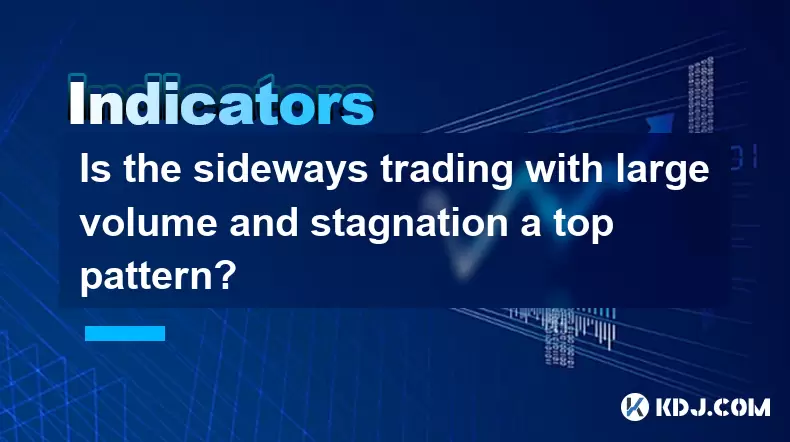
The phenomenon of sideways trading with large volume and stagnation often raises questions among cryptocurrency traders about whether it indicates a top pattern. This article will explore the characteristics of such market behavior, analyze its implications, and discuss whether it can be considered a reliable indicator of an impending market top.
Understanding Sideways Trading
Sideways trading, also known as horizontal trading or consolidation, occurs when the price of a cryptocurrency moves within a relatively narrow range over a period of time. This type of trading pattern is characterized by a lack of significant upward or downward movement, resulting in a horizontal trend line on a price chart.
In a sideways market, traders often see the price fluctuating between a defined support level and resistance level. The support level is the lowest point to which the price tends to fall before bouncing back up, while the resistance level is the highest point to which the price tends to rise before falling back down. These levels create a trading range that can persist for days, weeks, or even months.
The Role of Volume in Sideways Trading
Volume plays a crucial role in understanding the dynamics of a sideways market. When large volume accompanies sideways trading, it suggests that there is significant interest and activity in the market, even if the price is not moving significantly. High volume during sideways trading can indicate that traders are actively buying and selling within the established range, potentially setting the stage for a breakout.
In contrast, low volume during sideways trading may suggest a lack of interest or confidence in the market, which could lead to a prolonged period of stagnation. Therefore, monitoring volume alongside price action is essential for traders looking to interpret the significance of a sideways market.
Stagnation and Market Sentiment
Stagnation in a sideways market can be a sign of uncertainty among traders. When the price remains within a narrow range for an extended period, it may indicate that market participants are unsure about the future direction of the cryptocurrency. This uncertainty can lead to a reluctance to take significant positions, resulting in a lack of momentum and a continuation of the sideways trend.
Market sentiment plays a crucial role in driving price movements. In a stagnant sideways market, negative sentiment can build up, as traders grow frustrated with the lack of progress. Conversely, if traders perceive the sideways trading as an opportunity to accumulate or distribute assets at favorable prices, positive sentiment may prevail, potentially leading to a breakout.
Is Sideways Trading with Large Volume a Top Pattern?
The question of whether sideways trading with large volume and stagnation is a top pattern is complex and depends on various factors. A top pattern typically signals that a market has reached its peak and is likely to experience a significant downward correction. Several indicators and patterns can suggest a market top, but the presence of sideways trading with large volume and stagnation alone may not be sufficient to confirm such a scenario.
For sideways trading with large volume to be considered a potential top pattern, it would need to be accompanied by other bearish signals. These could include:
- Divergence between price and technical indicators such as the Relative Strength Index (RSI) or Moving Average Convergence Divergence (MACD).
- Bearish candlestick patterns forming near the top of the trading range.
- Increased selling pressure at resistance levels, as evidenced by higher volume on down days compared to up days.
- Negative news or events affecting the broader cryptocurrency market or the specific cryptocurrency in question.
Without these additional bearish signals, sideways trading with large volume and stagnation may simply indicate a period of consolidation before the next significant move, which could be either upward or downward.
Analyzing Historical Examples
To better understand whether sideways trading with large volume and stagnation can be considered a top pattern, it is helpful to examine historical examples within the cryptocurrency market. For instance, Bitcoin has experienced numerous periods of sideways trading throughout its history, some of which preceded significant price movements.
In 2019, Bitcoin underwent a prolonged period of sideways trading between $6,000 and $10,000, with large volumes being traded within this range. This period of stagnation was followed by a breakout to the upside, leading to a significant bull run in 2020 and 2021. This example illustrates that sideways trading with large volume does not necessarily indicate a top pattern but can instead be a precursor to a substantial move in either direction.
Another example can be seen in Ethereum in 2018, where the cryptocurrency experienced a period of sideways trading around the $300 level with high volume. This period of stagnation eventually led to a breakdown, with Ethereum falling to lower levels. However, it is important to note that other bearish indicators, such as negative market sentiment and macroeconomic factors, were present during this time, contributing to the eventual downside move.
Technical Analysis Tools for Identifying Top Patterns
To determine whether sideways trading with large volume and stagnation is a top pattern, traders often rely on a variety of technical analysis tools. These tools can help identify potential bearish signals that, when combined with sideways trading, may suggest an impending market top.
Moving Averages: Traders often use moving averages to identify trends and potential reversals. A death cross, where a short-term moving average crosses below a long-term moving average, can be a bearish signal that, when combined with sideways trading, may indicate a top pattern.
Relative Strength Index (RSI): The RSI is a momentum oscillator that measures the speed and change of price movements. A bearish divergence, where the price makes a higher high but the RSI makes a lower high, can signal weakening momentum and, when observed during sideways trading, may suggest a top pattern.
Volume Profile: This tool displays the amount of trading activity at different price levels. A high volume node near the top of the trading range can indicate significant selling pressure, which, when combined with sideways trading, may suggest a potential top pattern.
Candlestick Patterns: Certain candlestick patterns, such as shooting stars or bearish engulfing patterns, can indicate potential reversals. When these patterns form near the top of a sideways trading range, they may signal a top pattern.
Strategies for Trading Sideways Markets
Given the uncertainty surrounding whether sideways trading with large volume and stagnation is a top pattern, traders need to develop strategies to navigate these market conditions effectively. Here are some approaches that traders can consider:
Range Trading: This strategy involves buying near the support level and selling near the resistance level within the trading range. Traders can take advantage of the predictable price movements within the range to generate profits.
Breakout Trading: Traders can position themselves for a potential breakout from the sideways range. This involves setting buy orders above the resistance level and sell orders below the support level, anticipating a significant move once the price breaks out of the range.
Scalping: This short-term trading strategy involves taking small profits from frequent trades within the trading range. Scalpers aim to capitalize on the minor price fluctuations that occur during sideways trading.
Options Trading: Using options can be an effective way to hedge against potential downside risk while still benefiting from sideways trading. Traders can sell options with strike prices near the current trading range, collecting premiums as income.
Frequently Asked Questions
Q: Can sideways trading with large volume and stagnation occur in a bull market?
A: Yes, sideways trading with large volume and stagnation can occur in both bull and bear markets. In a bull market, it may represent a period of consolidation before the next upward move, while in a bear market, it could precede a further decline. The context of the broader market trend is crucial in interpreting the significance of sideways trading.
Q: How long can a period of sideways trading last?
A: The duration of sideways trading can vary significantly, ranging from a few days to several months or even longer. The length of the sideways period depends on factors such as market sentiment, trading volume, and the presence of significant news or events that could trigger a breakout.
Q: Are there specific cryptocurrencies more prone to sideways trading with large volume and stagnation?
A: While any cryptocurrency can experience sideways trading, larger and more established cryptocurrencies like Bitcoin and Ethereum tend to exhibit these patterns more frequently due to their higher liquidity and trading volume. However, smaller altcoins can also undergo periods of sideways trading, especially during times of low market volatility.
Q: Can fundamental analysis help in identifying a top pattern during sideways trading?
A: Fundamental analysis can provide valuable insights into the underlying factors driving a cryptocurrency's price. During sideways trading, analyzing factors such as project developments, partnerships, and regulatory news can help traders assess whether the market is likely to break out or break down. However, fundamental analysis should be used in conjunction with technical analysis for a more comprehensive understanding of potential top patterns.
Disclaimer:info@kdj.com
The information provided is not trading advice. kdj.com does not assume any responsibility for any investments made based on the information provided in this article. Cryptocurrencies are highly volatile and it is highly recommended that you invest with caution after thorough research!
If you believe that the content used on this website infringes your copyright, please contact us immediately (info@kdj.com) and we will delete it promptly.
- 5 Cryptos With Massive Upside Potential in the Second Half of 2025
- 2025-06-14 03:50:12
- Snorter Token (SNORT) Price Pumps 5% After Raising $698K In Presale
- 2025-06-14 03:50:12
- Almost a Third of Bitcoin's Supply Is Held by Centralized Treasuries
- 2025-06-14 03:45:12
- GameStop-Themed Meme Coin (GME) Soars 532% After the Video Game Retailer Announces $1.75B Notes Offering
- 2025-06-14 03:45:12
- Bitcoin (BTC) persists in a well-defined bullish structure but recent activity in spot and derivatives markets suggests a temporary
- 2025-06-14 03:40:12
- Farcaster Pro OG NFT: Claim Your Exclusive Digital Reward
- 2025-06-14 03:40:12
Related knowledge
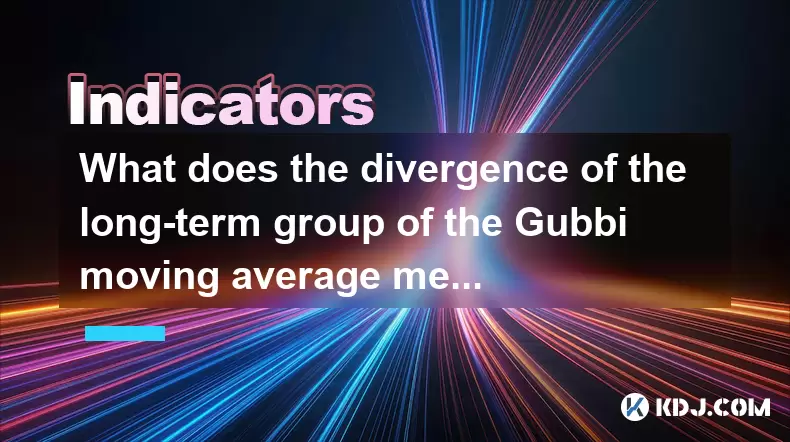
What does the divergence of the long-term group of the Gubbi moving average mean? How long can the trend last?
Jun 14,2025 at 02:56am
Understanding the Gubbi Moving AverageThe Gubbi moving average is a technical indicator used by traders in cryptocurrency markets to identify trends and potential reversals. Unlike traditional moving averages, the Gubbi variant incorporates unique calculations that emphasize price momentum and volatility adjustments. This makes it particularly useful fo...
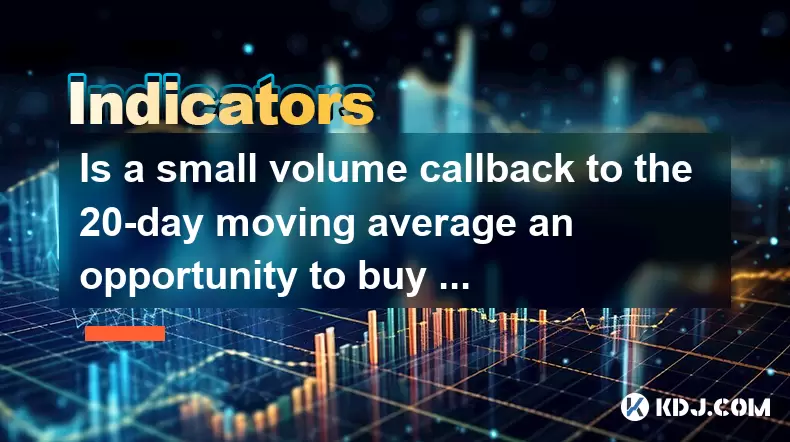
Is a small volume callback to the 20-day moving average an opportunity to buy low? What is the key to look at?
Jun 14,2025 at 02:28am
Understanding the 20-Day Moving Average in Cryptocurrency TradingIn cryptocurrency trading, the 20-day moving average (20DMA) is a commonly used technical indicator that helps traders assess the short-term trend of an asset. It calculates the average price of a cryptocurrency over the last 20 days and smooths out price volatility. When a coin experience...
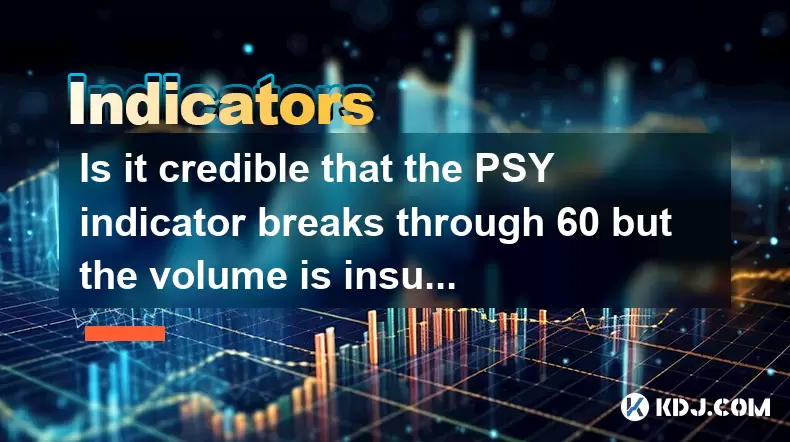
Is it credible that the PSY indicator breaks through 60 but the volume is insufficient?
Jun 14,2025 at 12:14am
Understanding the PSY Indicator in Cryptocurrency TradingThe Psychological Line (PSY) indicator is a momentum oscillator used primarily to measure the sentiment of traders and investors in financial markets, including the cryptocurrency space. It calculates the ratio of days where prices closed higher versus lower over a specified period, typically 12 o...
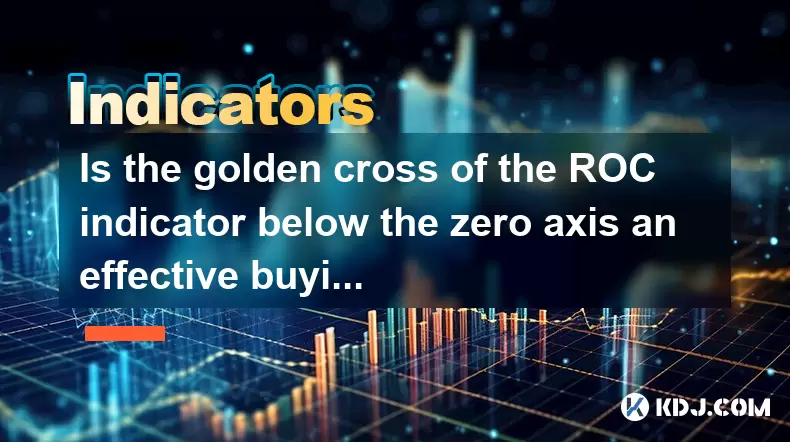
Is the golden cross of the ROC indicator below the zero axis an effective buying point?
Jun 14,2025 at 01:29am
Understanding the ROC Indicator and Its SignificanceThe Rate of Change (ROC) indicator is a momentum oscillator used in technical analysis to measure the percentage change in price between the current closing price and the closing price from a set number of periods ago. This tool helps traders assess the speed at which prices are changing, offering insi...
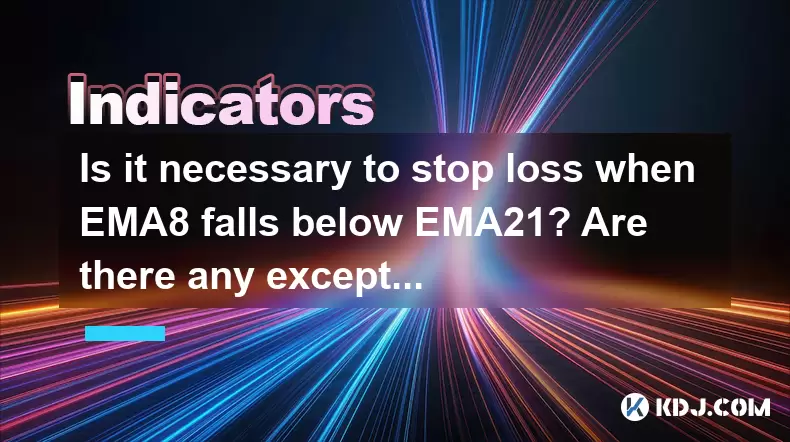
Is it necessary to stop loss when EMA8 falls below EMA21? Are there any exceptions?
Jun 14,2025 at 02:42am
Understanding EMA8 and EMA21 in Cryptocurrency TradingIn cryptocurrency trading, Exponential Moving Averages (EMAs) are widely used technical indicators to identify trends and potential reversal points. The EMA8 refers to the 8-period exponential moving average, while EMA21 is the 21-period EMA. These tools help traders make informed decisions by smooth...

Will the RSI fall after the top divergence? How to improve the judgment accuracy?
Jun 13,2025 at 11:21pm
Understanding RSI and Top Divergence in Cryptocurrency TradingThe Relative Strength Index (RSI) is a momentum oscillator widely used in cryptocurrency trading to measure the speed and change of price movements. It typically ranges from 0 to 100, with levels above 70 considered overbought and below 30 considered oversold. In crypto markets, where volatil...

What does the divergence of the long-term group of the Gubbi moving average mean? How long can the trend last?
Jun 14,2025 at 02:56am
Understanding the Gubbi Moving AverageThe Gubbi moving average is a technical indicator used by traders in cryptocurrency markets to identify trends and potential reversals. Unlike traditional moving averages, the Gubbi variant incorporates unique calculations that emphasize price momentum and volatility adjustments. This makes it particularly useful fo...

Is a small volume callback to the 20-day moving average an opportunity to buy low? What is the key to look at?
Jun 14,2025 at 02:28am
Understanding the 20-Day Moving Average in Cryptocurrency TradingIn cryptocurrency trading, the 20-day moving average (20DMA) is a commonly used technical indicator that helps traders assess the short-term trend of an asset. It calculates the average price of a cryptocurrency over the last 20 days and smooths out price volatility. When a coin experience...

Is it credible that the PSY indicator breaks through 60 but the volume is insufficient?
Jun 14,2025 at 12:14am
Understanding the PSY Indicator in Cryptocurrency TradingThe Psychological Line (PSY) indicator is a momentum oscillator used primarily to measure the sentiment of traders and investors in financial markets, including the cryptocurrency space. It calculates the ratio of days where prices closed higher versus lower over a specified period, typically 12 o...

Is the golden cross of the ROC indicator below the zero axis an effective buying point?
Jun 14,2025 at 01:29am
Understanding the ROC Indicator and Its SignificanceThe Rate of Change (ROC) indicator is a momentum oscillator used in technical analysis to measure the percentage change in price between the current closing price and the closing price from a set number of periods ago. This tool helps traders assess the speed at which prices are changing, offering insi...

Is it necessary to stop loss when EMA8 falls below EMA21? Are there any exceptions?
Jun 14,2025 at 02:42am
Understanding EMA8 and EMA21 in Cryptocurrency TradingIn cryptocurrency trading, Exponential Moving Averages (EMAs) are widely used technical indicators to identify trends and potential reversal points. The EMA8 refers to the 8-period exponential moving average, while EMA21 is the 21-period EMA. These tools help traders make informed decisions by smooth...

Will the RSI fall after the top divergence? How to improve the judgment accuracy?
Jun 13,2025 at 11:21pm
Understanding RSI and Top Divergence in Cryptocurrency TradingThe Relative Strength Index (RSI) is a momentum oscillator widely used in cryptocurrency trading to measure the speed and change of price movements. It typically ranges from 0 to 100, with levels above 70 considered overbought and below 30 considered oversold. In crypto markets, where volatil...
See all articles

























































































